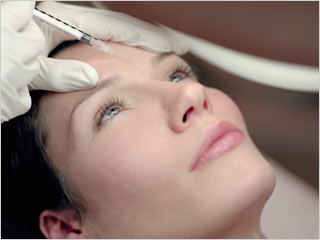Liposuction Patient Selection
/ Selecting Liposuction Patients
Selecting Liposuction Patients
Cosmetic practices spend large amounts of time planning their clinic, what services they are going to offer, and advertising to get patients interested enough to come in and purchase services. Unfortunately, practices do not spend enough time identifying good liposuction candidates after they walk in the door. As a consequence, patient safety, outcomes, and patient satisfaction can greatly be affected. To be a successful surgery center or medical spa, and eliminate possible liability, you must be able to identify which type of patients you want signing up for surgical procedures.
Cosmetic patients are for the most part kind, caring and wonderful people. When you are conducting services and they feel comfortable with you, they will tell you all about their marriage, divorce, kids, job, etc. There are simply a plethora of good patients. Unfortunately, there are a few cosmetic patients who may be at the wrong point in their lives for undergoing cosmetic surgery. When patients come in for services such as Liposuction, you are entering a relationship with these patients that will extend through the surgery and through follow ups and aftercare. The ideal relationship you want to create is one of harmony, happiness, peace, instead of dysfunction and high-stress. So how do you identify what patents might be best for liposuction?
It all starts even before the consult. If a patient comes in to your office and is rude to the receptionist or other staff, be cautious and understand that this is a person your office will have to interact with many times over the course of their treatment(s). If they are not happy with minor everyday events, they probably will be very unhappy recovering from surgery and in a binder for one month. During the consult, a patient can sometimes be harboring some unrealistic expectations due to media, false advertising, and their own ideas. This is where the patient care coordinator or Surgeon needs to educate the patient on what he/she can expect as an outcome. Sometimes it’s a joke when a patient says, “I want to look like J. Lo in the butt and Dolly Parton in the breasts.” Other times a patient is serious and you need to explain what is and is not possible with their body type. Showing your before and after pictures during this time of previous cosmetic patients who have the same body shape is important so patients can form their own picture of what they can expect with their results.
Another red flag is if the patient has had multiple plastic surgeries and is still not happy with their body or the patient believes their abdominal fat is sticking out over their jeans t and you cannot visually see that for yourself. Such a patient may be suffering from body dismorphic disorder (BDD). BDD is observed in as many as 10% of all cosmetic patients. Signs and symptoms of BDD include a strong belief that a patient has an abnormality or defect in their appearance that makes them ugly, feeling extremely self-conscious, avoiding social situations, refusing to appear in pictures. Patients with body dismorphic disorder may focus on a body feature they want to change and then focus on another part in the future (picture Heidi Pratt). Please realize you can never make possible BDD types of patients happy and refer suspected BDD patients to a mental health provider for treatment. If you are in doubt, it might be a good idea to refer your patient to a mental health professional for clearance before moving forward with cosmetic surgery.
Sometimes patients come in with an urgency to get surgery performed “right away.” The sense of hurry needs to be explored as this could be related to a divorce or other catastrophic event that may not be in the patient’s best interest nor lend the patient’s full dedication to a surgical procedure. It’s always a good idea to wait until a patient is in a “good place” in their lives. Further, patients, who are excessively obese, have psychological or emotional problems, history of drug abuse and unrealistic treatment goals are also not good candidates. It is mandatory to perform a comprehensive preoperative consultation including a screening questionnaire to identify patients who are appropriate candidates. A liposuction consultation should cover the risks, goals, anticipated results, and expected postoperative care. All patients’ questions should be answered and an assessment should be made as to whether or not the patient is the right candidate for surgery.
The ideal patient for cosmetic procedures is content, with a pleasant disposition and not dealing with any life changing problems when they come into your office. They are realistic about their expectations and basically feel good about themselves but have an area or two that is troublesome. Patients need to be made aware that liposuction is strictly a body-contouring procedure and should never be viewed as a method of weight loss or an alternative to diet and exercise. Patients should be selected with localized adipose deposits that will not go away despite diet and exercise. As in all cosmetic procedures, proper patient selection is vitally important in ensuring satisfactory results after liposuction.
Wendy Hovorka B.S. M.L.A. Valley Laser Surgical Solutions Vein Center, McAllen, Texas
Submit a guest post and be heard.







